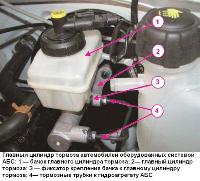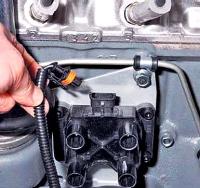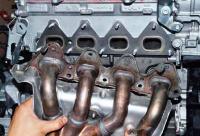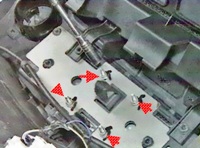The body of the Renault Megan 2 car is of a supporting structure, such as a four-door sedan, a five-door hatchback or a five-door station wagon.
The body consists of a frame and attachments.
The body frame includes the base, sidewalls, roof and other parts connected by electric welding (spot, seam and arc), and is a non-separable structure with sufficient rigidity and capable of carrying all vehicle units, attachments of the body, components and parts interior.
Hinged assemblies include side doors, hood, trunk lid or tailgate (on station wagon or hatchback vehicles), front fenders, bumpers.
Doors, hood and trunk lid (tailgate) are hinged to the body, front fenders are bolted.
The front and rear bumpers are plastic, painted in the color of the body, attached to the car body with self-tapping screws and plastic clips.
Bumpers are equipped with metal energy-absorbing reinforcements.
Polymeric energy-absorbing elements are installed under the bumpers.
The radiator cover is not removable, it is part of the bumper.
The windshield is three-layer, triplex type.
The glass of the side doors, sidewalls, as well as the rear window (tailgate glass) are tempered.
Wind and rear windows (tailgate glass), sidewall windows are glued into the corresponding openings of the body.
The front seats are separate, with mechanical adjustment of the angle of the backrest and mechanisms for moving in the longitudinal direction.
The front driver's seat is equipped with a mechanism for changing the height of the front and rear of the cushion.
The front seat backrests can be adjusted to a comfortable resting position.
Seat headrests are easily removable, height-adjustable, installed on the backs of all seats (three headrests are installed on the back of the rear seat).
The rear seat of the car with a solid cushion and a backrest divided into two parts by a folding armrest (depending on the configuration).
A hatch is provided behind the armrest, closed by a lid, after which it is folded down, it becomes possible to transport long items in the trunk, partially letting them into the passenger compartment.
Front and rear seat belts inertial diagonal.
In order to increase passive safety, the car is equipped with an SRS system.
This system includes airbags and front seat belt pretensioners that deploy at the time of an accident at high vehicle speeds.
In the passenger compartment, a cigarette lighter, front and rear ashtrays (depending on the configuration), sun visors, a heating, air conditioning and ventilation system, a rear-view mirror, and handrails are installed.
There is a mount for a fire extinguisher under the driver's seat, and a first-aid kit under the passenger's seat.
The volume, temperature, direction and intensity of air flows in the car interior are regulated by switches installed in the control unit for the heating, air conditioning and ventilation system, as well as knobs for adjusting the nozzles on the instrument panel.
The car is equipped with front and rear towing eyes, electric door locks, electric tailgate (tailgate) lock, electric heated front seats.
The body of the Renault Megane 2 car is provided with exhaust ventilation through deflectors with valves installed in the rear part of the body behind the rear bumper.
Do not cover the body with a cover made of dense material when the car is parked for a long time.
A cover that gets wet in the rain creates a steam bath when heated in the sun and the paintwork of the body under it can peel off and swell.
In addition, under gusts of wind, the cover moves and abrades the paint on the protruding parts of the body.
Do not place rubber objects on the body.
After some time, the rubber will leave indelible spots on the coating (especially light ones).
After washing, be sure to remove the rubber mats and dry the interior.
Moisture under rugs is the main cause of floor corrosion.
Body clearances
When repairing a body and replacing body parts, it is necessary to know the dimensions of the gaps of mating parts
We look at the figure and in the table we find the gap we need.
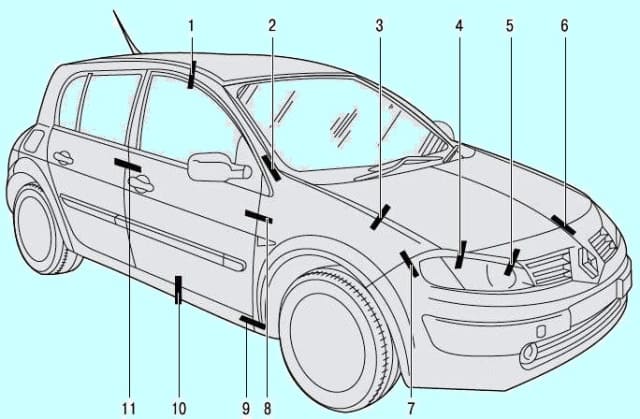
Front of the car
Mating parts - allowable clearance, mm
- Front door roof 22.7±1.6
- Front fender A-pillar 2.5±1.3
- Hood front fender 2±1.9
- Hood front headlight 2±1.4
- Front bumper front headlight 1.5±1.3
- Hood front bumper 3.5±1.1
- Front Headlight Front Fender 3.5±1.1
- Front door front fender 4±1.2
- Front fender door sill 3±1.3
- Front door front door sill 4.2±1.4
- Front door rear door (top clearance) 4.2±1.2
Rear of a hatchback car
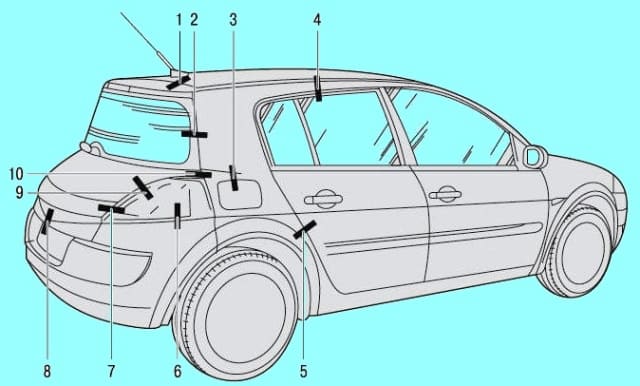
Mating parts - Permissible clearance mm
- Roof - Tailgate 5.1±0.9
- Tailgate - rear wing (top clearance) 4.5±1.9
- Fuel hatch - rear wing 2.5±0.9
- Rear door - roof 22.7±1.6
- Rear door - rear wing 4±1.2
- Rear light - rear bumper 1.5±1.4
- Rear light - tailgate (bottom gap) 4.5±2.1
- Tailgate - rear bumper 5±1.9
- Rear light - tailgate (top clearance) 4.5±1.7
- Tailgate - rear fender (bottom gap) 4.5±1.9
Rear of a sedan car
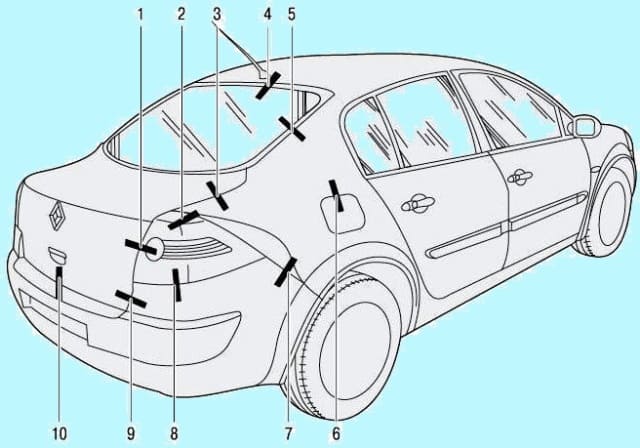
Mating Parts - Gap
- Rear light - trunk lid 4±2
- Rear light - trunk lid 1.5±0.9
- Trunk lid - rear wing 4±1.5
- Rear window - roof 5±0.5
- Rear Window - Rear Wing 3±1.9
- Rear Fender - Fuel Door 2.5±0.0
- Rear fender - rear bumper 0.5±0.9
- Rear bumper - taillight 1.5±1.4
- Rear bumper - trunk lid (side clearance) 4±2
- Rear bumper - trunk lid (bottom gap) 6±2.5
Rear of station wagon

Mating Parts - Gap
- Tailgate - rear bumper (side clearance) 4.5±1.8
- Tailgate - C-pillar 4.5±2
- C-pillar - fixed side window 3±1
- Fixed side window - rear wing 3±1
- Rear Fender - Fuel Door 2.5±1
- Rear door - rear wing 4±1.3
- Rear door - rear door sill 4.5±2
- Rear bumper - rear light 1.5±1.5
- Rear light - rear fender 1.5±1
- Tailgate - rear bumper (bottom gap) 4.5±1.8
Control dimensions of the base of the body
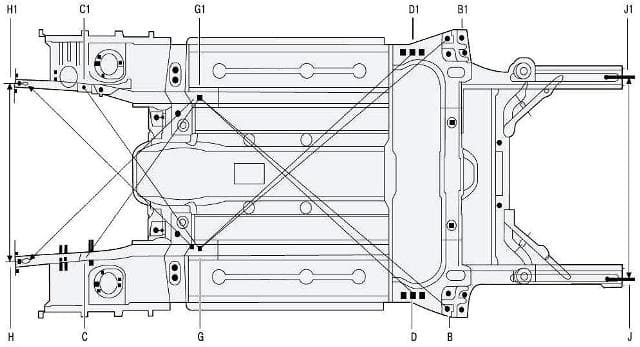
- B-G1 = B1-G
- G1 - C = G - C1
- G1 - H = 1391 mm
- G - H1 = 1401 mm
- G-B1 = G1-B
- G-D1 = G1-D
- H - H1 = 968 mm
- J - J1 = 1102 mm






